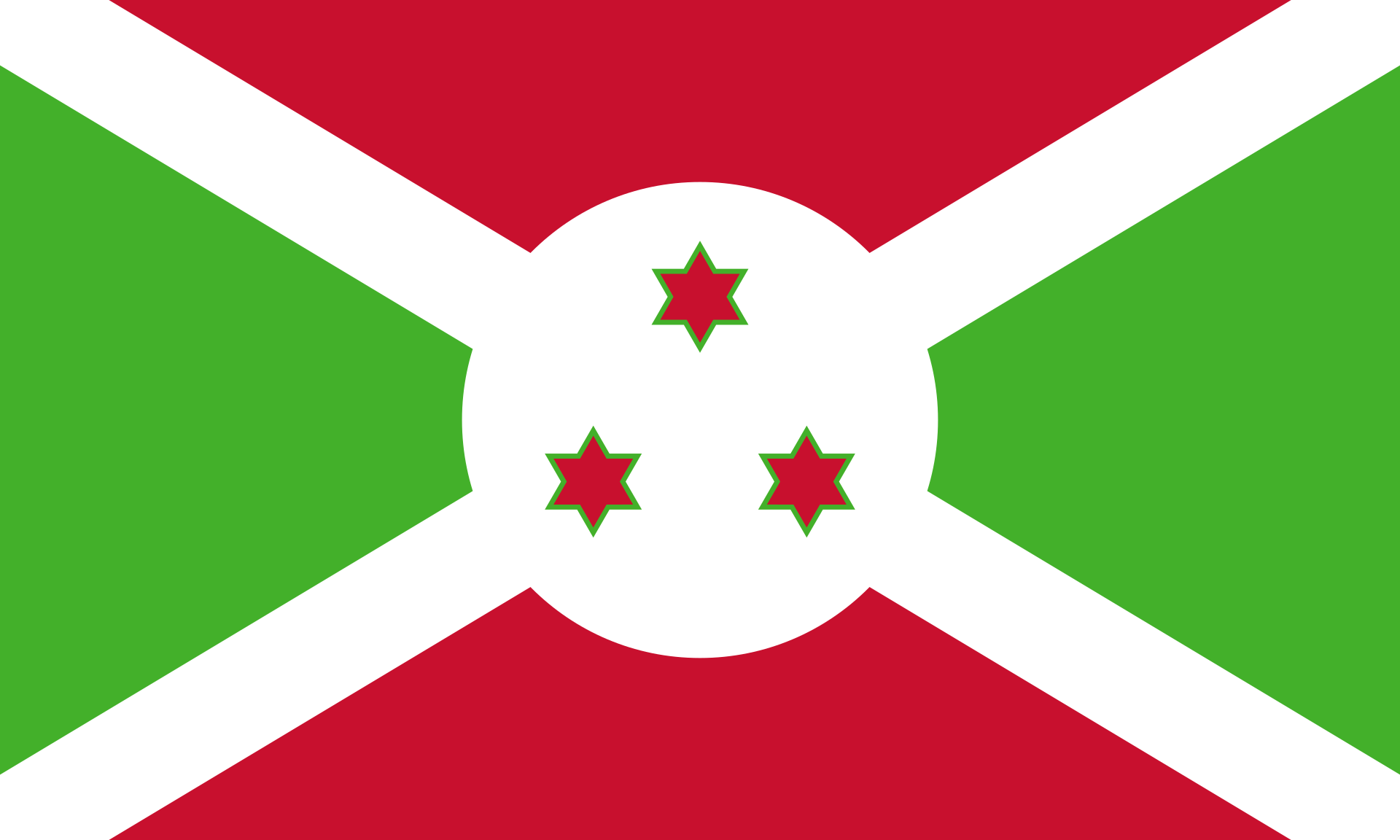The flag of Burundi is a vibrant and symbolic representation of the country’s history, values, and aspirations. It features a white diagonal cross that divides the flag into four sections. The upper and lower sections are red, while the left and right sections are green. At the center of the flag, within a white circle, are three red, six-pointed stars outlined in green, arranged in a triangular pattern.
Each element of the flag holds significant meaning:
- Red symbolizes the struggles and sacrifices for independence and the blood shed by the people.
- Green represents hope, progress, and the fertile land of Burundi.
- White stands for peace and the desire for harmony among the people.
- The three stars in the center represent the motto of Burundi: “Unity, Work, Progress” (“Unité, Travail, Progrès”). They also symbolize the three major ethnic groups of the country—Hutu, Tutsi, and Twa—and their unity. Additionally, the stars are said to represent the loyalty of the Burundian people to God, the king, and the country.
Adopted in 1967 after Burundi gained independence from Belgium, the flag reflects both the country’s ethnic diversity and its commitment to working together for peace and development. The white circle around the stars signifies the ongoing effort to maintain unity among the different groups within the country. The diagonal cross, which divides the colors, creates a dynamic and symmetrical design, emphasizing balance and harmony.
The flag of Burundi serves as a reminder of the nation’s journey toward independence and its ongoing commitment to unity and progress.
